Brian Dipert
EDN
Back in May 2016, EDN published my teardown of Cheerson's $10 CX-10 quadrotor drone [1]. More recently, you saw my dissection and analysis of its $15 CX-10C sibling, with an integrated still and video camera that captured images to a memory card inserted in the drone's microSD slot. And now it's time for the ~$20 CX-10W, which live streams those same images to a Wi-Fi-connected Android- or iOS-based smartphone, tablet, or other device.
By default, the CX-10W is also controlled by that same Android- or iOS-based device ... but drone enthusiasts report that a CX-10 or CX-10C's transmitter can alternatively also control the quadrotor. If true, this means that the CX-10W simultaneously supports two different 2.4 GHz protocols; industry-standard 802.11, and Panchip Microelectronics' proprietary scheme. How did Cheerson accomplish this wireless juggling act? Let's find out.
A few external packaging shots to start out; the box is much smaller this time, since the standalone remote control isn't included:

As you can see from the package markings, the CX-10W comes in three different colors. I randomly received the pink option:

Here it is out of the box but still in restraints:

And here's what's underneath it: a charging cable, four spare blades, and an as-usual skimpy instruction manual:

Here are four sequential quadrant views of the quadrotor, showing the power switch and charging port, camera, etc. (but perhaps obviously, no microSD slot this time):


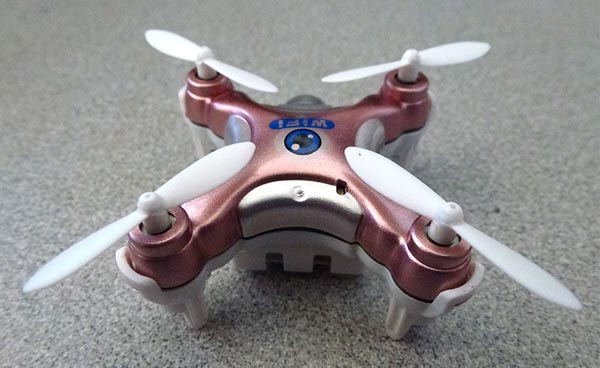
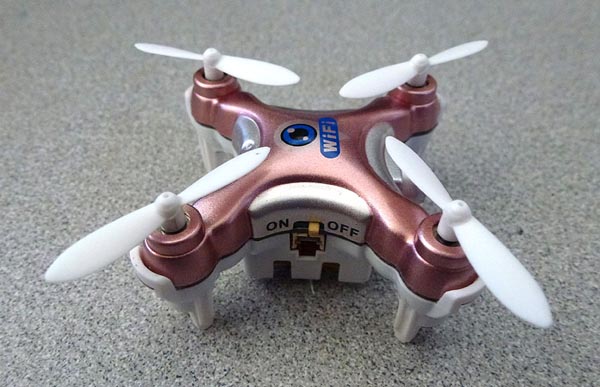
And here's a peek at the underside; as usual with Cheerson drones, water landings are not recommended:

Look closely, and you'll peruse something we haven't seen before with either the CX-10 or CX-10C ... an external antenna. Here's a closeup, intact:
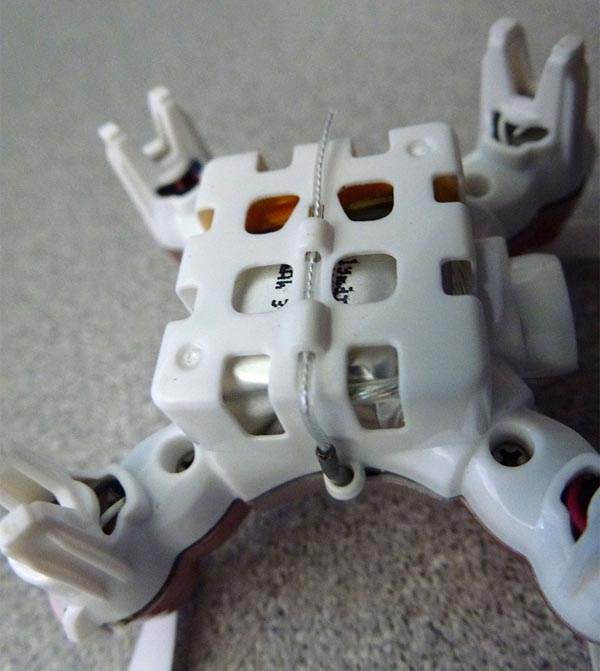
And unfurled:
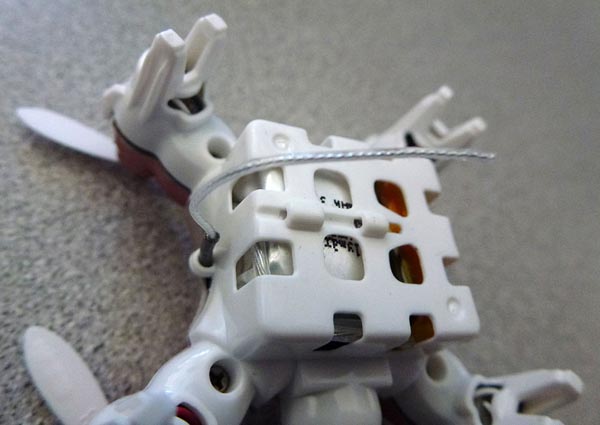
For reasons that will become clearer shortly, I'm pretty sure this one is for 2.4 GHz Wi-Fi.
Remove the four underside screws with a 000-size Philips head screwdriver, unclip the tab at each rotor tip, and the two halves of the system then easily separate:
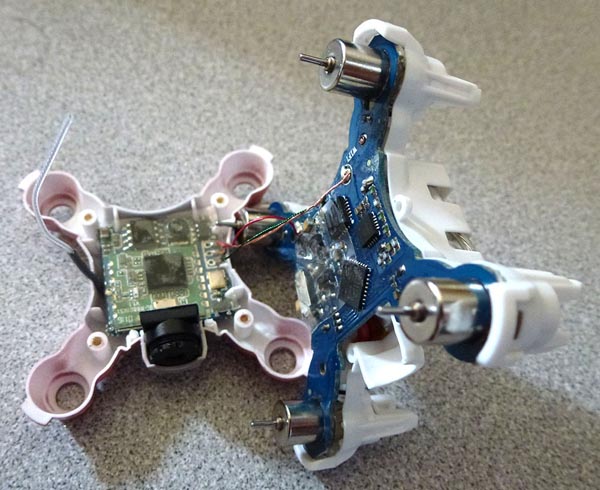
First off, here's a view of one side of the bottom-half PCB:
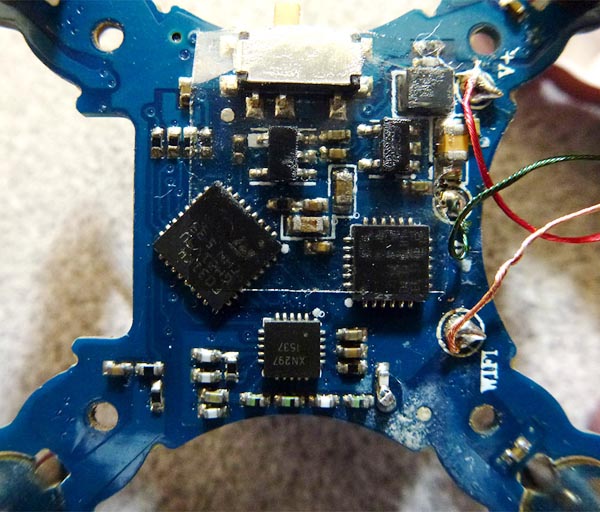
The insulating plastic tape somewhat distorts the package markings, I realize, but removing it only made those markings even more obscure. So you'll have to trust me when I tell you that these are the exact same three foundation ICs found in the CX-10 and CX-10C:
- A Panchip Microelectronics XN297 2.4 GHz transceiver at the bottom, intended for wireless mice and other applications
- An InvenSense MPU-6050 MEMS IC above and the right of the XN297, which combines 3-axis gyro and 3-axis accelerometer functions along with integrating a motion processor
- And an STMicroelectronics' STM32F031K MCU to the left of the MPU-6050 (as well as above and to the left of the XN297), based on an ARM Cortex-M0 processor
Flip this PCB over and, in addition to gaining a clearer view of the lithium-ion polymer battery, you'll also find another antenna. This one, considering what's on the other side of this same PCB, likely handles Panchip's proprietary 2.4 GHz protocol:
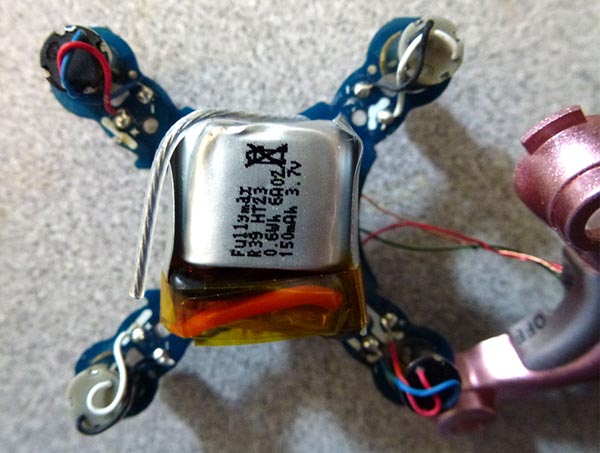
Move the antenna out of the way, flip the battery around, and you'll find ... not much:
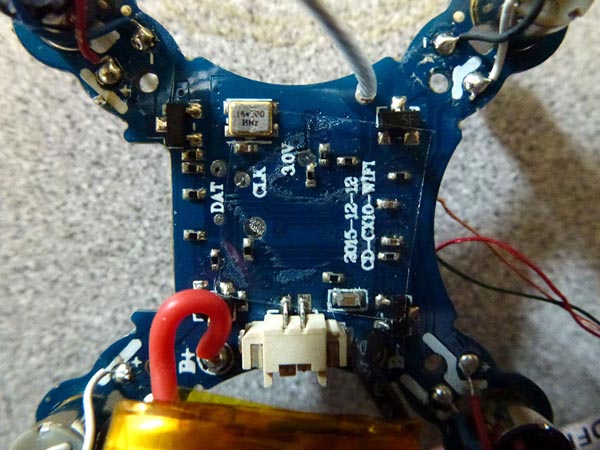
Now for the top-half PCB. As you can already tell from the markings on the other PCB, one of this PCB's functions involves Wi-Fi (the other two wires handle power and ground). And in fact, the IC at the center is a Marvell 88W-class 802.11 transceiver:
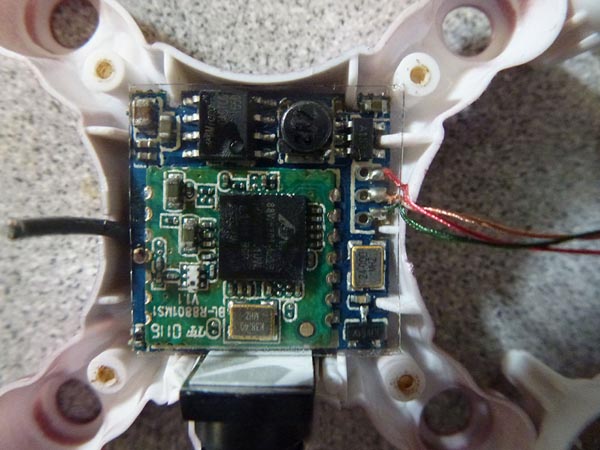
The same plastic tape distortions as before reared their ugly heads once again. My keen-eyed niece tells me that it's the 88W8301, which doesn't seem to be in Marvell's standard-parts listing. Enthusiasts have already hacked the wireless data stream between the drone and Android- or iOS-based control-and-display device, so we'll likely know more soon. Regardless of its exact identity, you can also discern the solder connection for the Wi-Fi antenna to the left of the Marvell transceiver IC. And flipping the PCB overmbrings the Wi-Fi antenna into clearer view. You can also now see the SoC for the still/video camera, as well as the camera itself. Both seem to be identical to those found in the CX-10C, but unfortunately the SoC's identity is once again obscured by missing package markings.
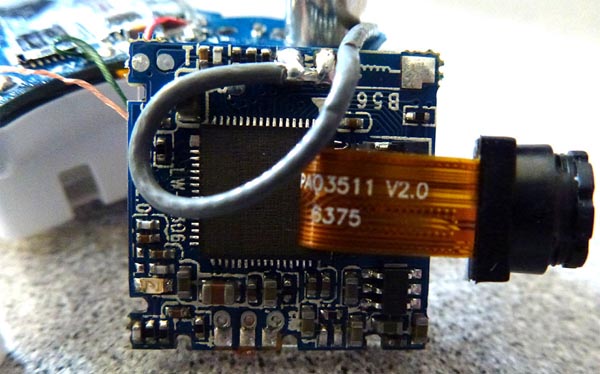
This concludes my three-part Cheerson drone family teardown series! As always, I welcome your thoughts in the comments.

